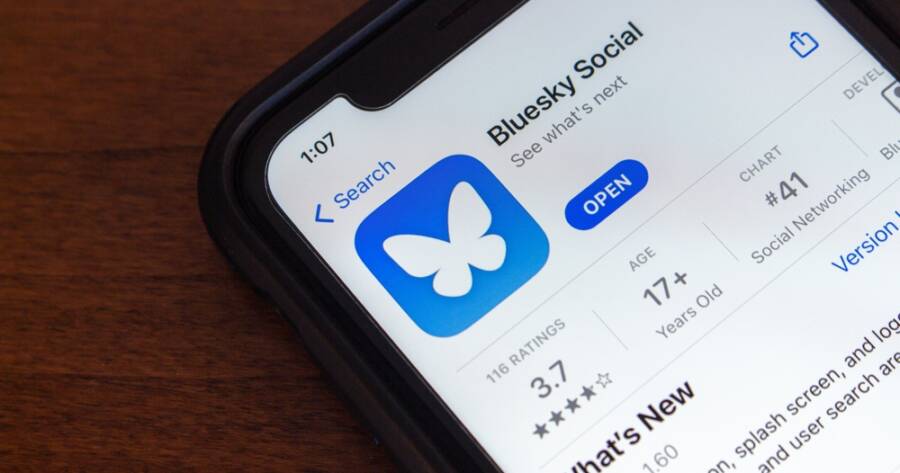In a world where social media giants like Facebook, X, and Instagram dominate the online space, new platforms occasionally emerge, hoping to capture users’ attention. Bluesky is one of the latest contenders, drawing attention with its promise of decentralization and privacy-focused features. But is Bluesky truly a worthy rival to the established platforms, or is it just another social media hype?
What Is Bluesky?
Bluesky is a decentralized social media platform created as an alternative to the centralized systems of existing social networks. It was initiated by Jack Dorsey, the co-founder of Twitter, and aims to provide users with more control over their data and interactions. The platform is built on a protocol called the “AT Protocol,” which allows for greater openness and flexibility, allowing anyone to build and connect their social media applications.
Unlike traditional social media, where a single company controls the platform’s rules and content moderation, Bluesky’s decentralized approach gives users and developers more freedom. This could lead to a more open, diverse environment, where users aren’t at the mercy of corporate policies or algorithms. The idea behind Bluesky is to offer a platform that’s not only user-friendly but also community-driven, encouraging innovation and diverse perspectives.
The Appeal of Decentralization
Bluesky’s biggest selling point is its decentralized nature. In traditional social media platforms, all data and content are stored on a centralized server owned by the platform’s company. This means that the company has full control over user data, privacy settings, and content moderation decisions. Bluesky, on the other hand, allows for decentralized control, which means that different organizations or individuals can host their own versions of the platform.
This decentralization brings several potential benefits. First, it offers users more control over their data. Instead of handing everything over to a single company, users can choose who hosts their data and how it’s used. Second, decentralization promotes a more transparent approach to content moderation, as there is no single entity dictating the rules. This could lead to more balanced and diverse conversations, as well as fewer biases in how content is displayed.
However, the concept of decentralization also comes with challenges. For instance, without a central authority overseeing content, there’s the potential for harmful or misleading information to spread unchecked. The challenge lies in finding a balance between freedom and responsibility, ensuring that users aren’t exposed to harmful content while maintaining the benefits of decentralization.
User Experience and Features
At its core, Bluesky offers a familiar social media experience. Users can create profiles, follow others, and post short messages, much like Twitter in its hey-day. The platform is designed to be simple, with a clean interface that focuses on ease of use. While the current version of Bluesky is still evolving, it includes features like direct messaging, trending topics, and customizable notifications, allowing users to interact with the platform in a variety of ways.
One standout feature of Bluesky is its focus on customization. Because the platform is decentralized, developers can build different applications that use Bluesky’s underlying protocol, giving users access to a wide variety of experiences. For example, one version of the platform could focus on privacy, while another could prioritize user-generated content. This level of flexibility could make Bluesky more appealing to users who want more control over how they engage with social media.
However, as with any new platform, Bluesky is still in its early stages. The user base is smaller than established social networks, and some features are still being fine-tuned. While the platform has garnered interest, it will take time for Bluesky to fully establish itself and offer a robust set of features that rival those of larger social media platforms.
The Challenges Bluesky Faces
Despite its promising concept, Bluesky faces several hurdles as it attempts to compete in the social media space. The biggest challenge is building a user base. For a new platform to succeed, it needs to attract users who are willing to leave established networks like Facebook, X, or Instagram. Given the dominance of these platforms, convincing users to switch to Bluesky will be difficult, especially when it’s still relatively unknown.
Another challenge for Bluesky is convincing developers to build on its decentralized protocol. While the AT Protocol is designed to be flexible, it’s still new and may require time for developers to fully embrace it. Without a robust ecosystem of apps and integrations, Bluesky may struggle to offer the same level of functionality that users are accustomed to on other platforms.
Finally, the decentralized nature of Bluesky raises questions about content moderation. While decentralization has the potential to provide more freedom, it also makes it harder to prevent harmful content from spreading. Without a central authority to regulate content, there’s the risk of abuse and misinformation. How Bluesky addresses these issues will determine whether it can gain widespread trust.
Is Bluesky the Future of Social Media?
Bluesky’s promise of decentralization, user control, and privacy has the potential to reshape social media as we know it. However, it faces significant challenges in building a user base, attracting developers, and ensuring responsible content moderation.
While the concept of a decentralized platform is appealing, its success will depend on how well it can balance freedom with accountability.

